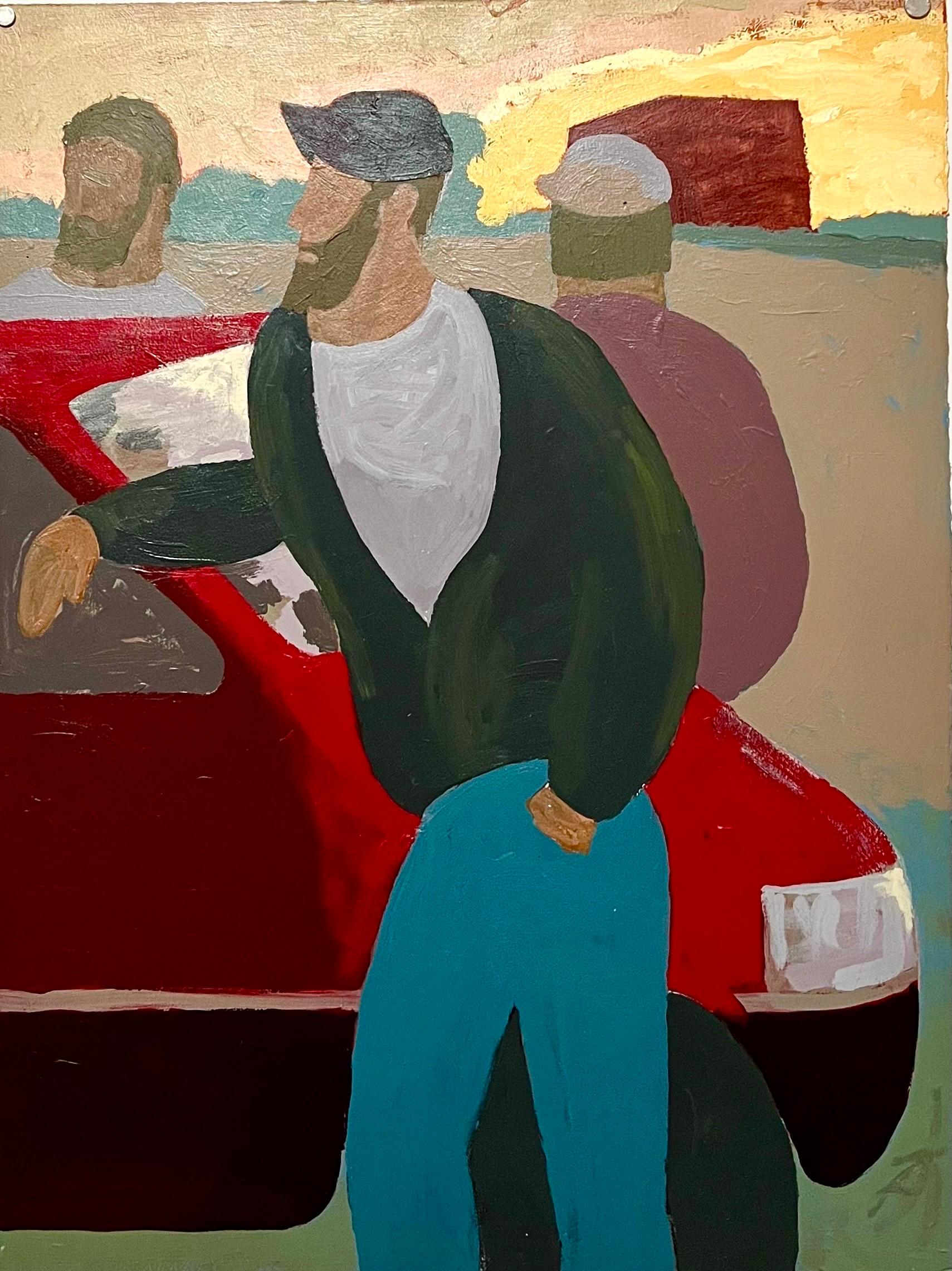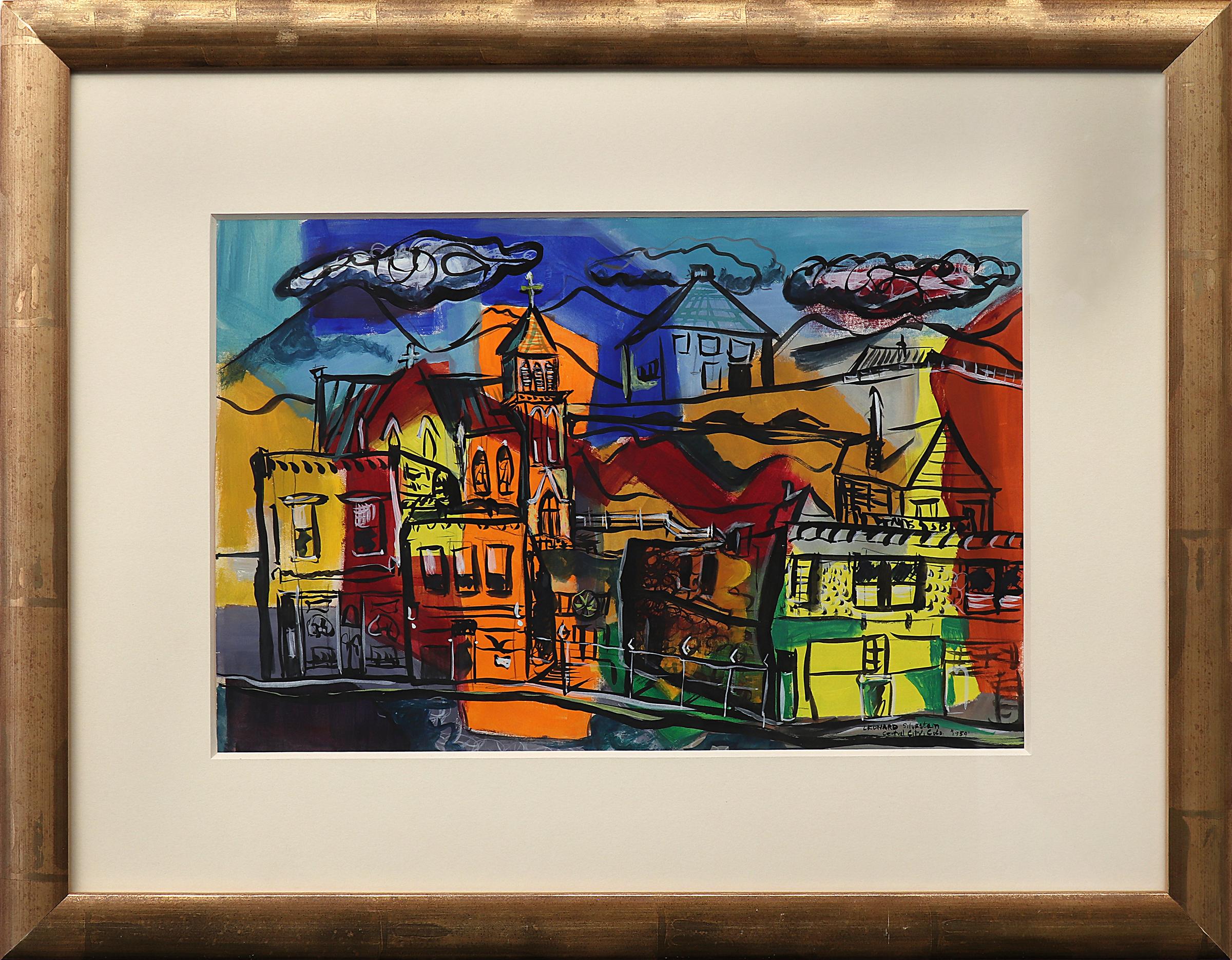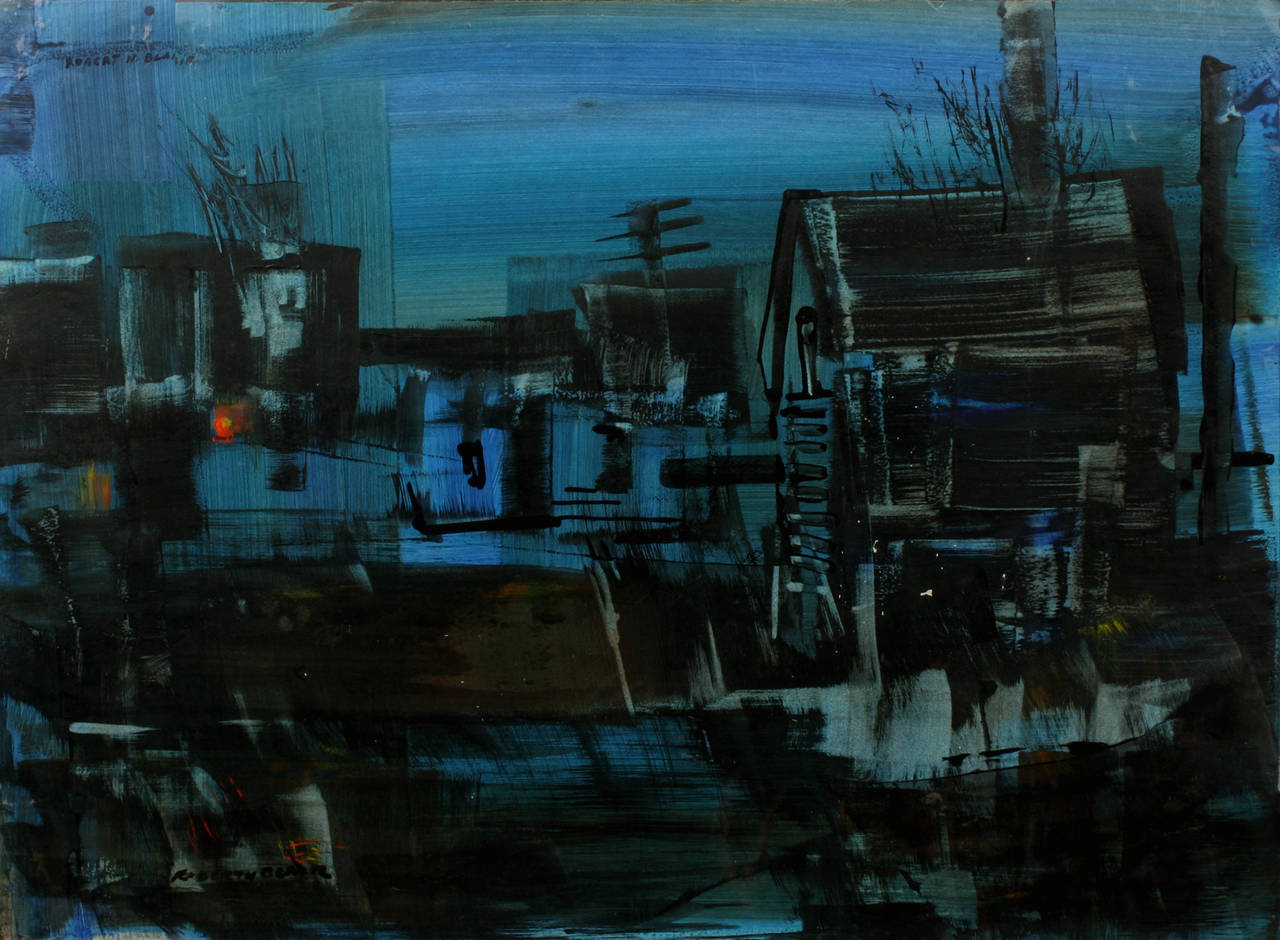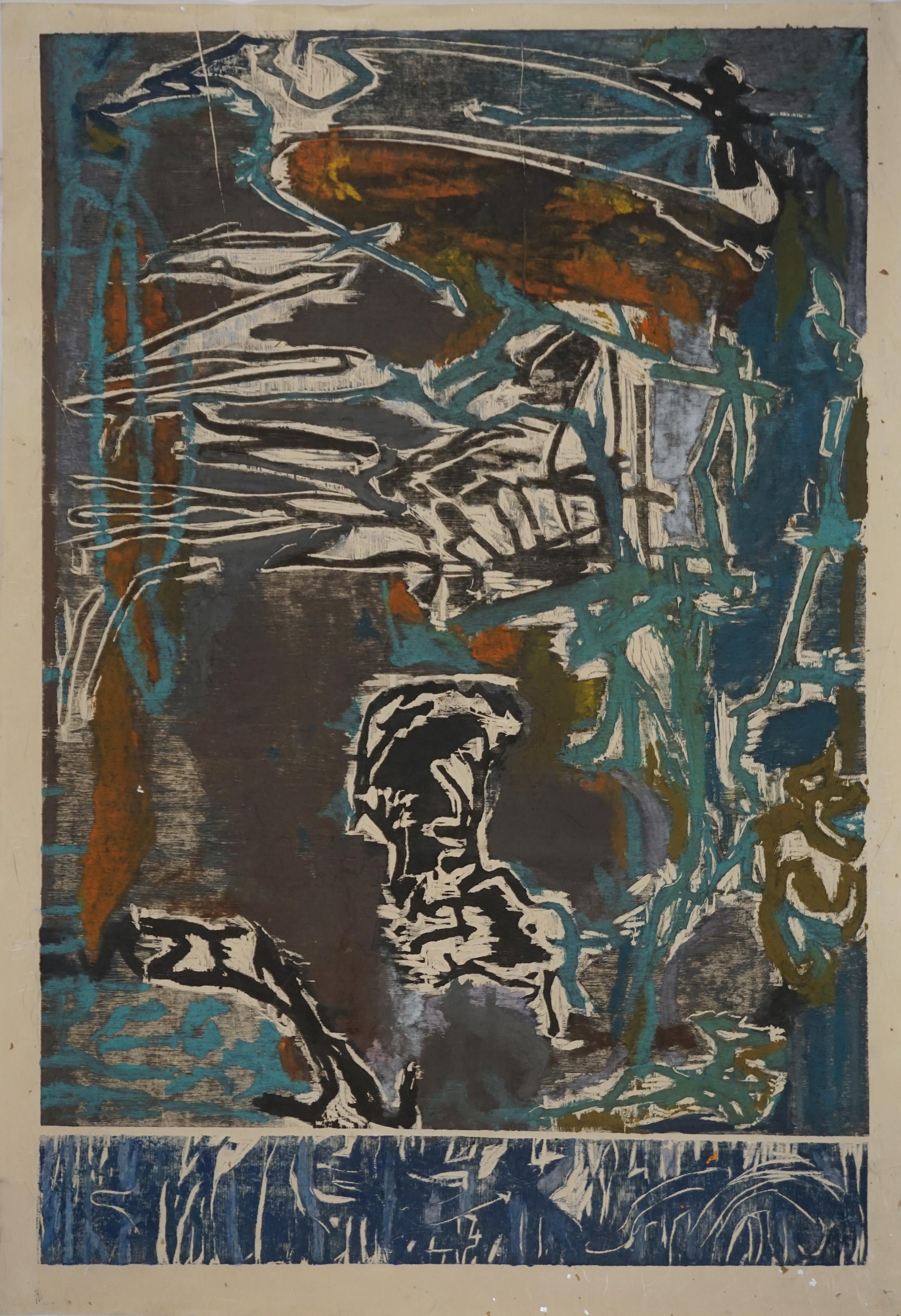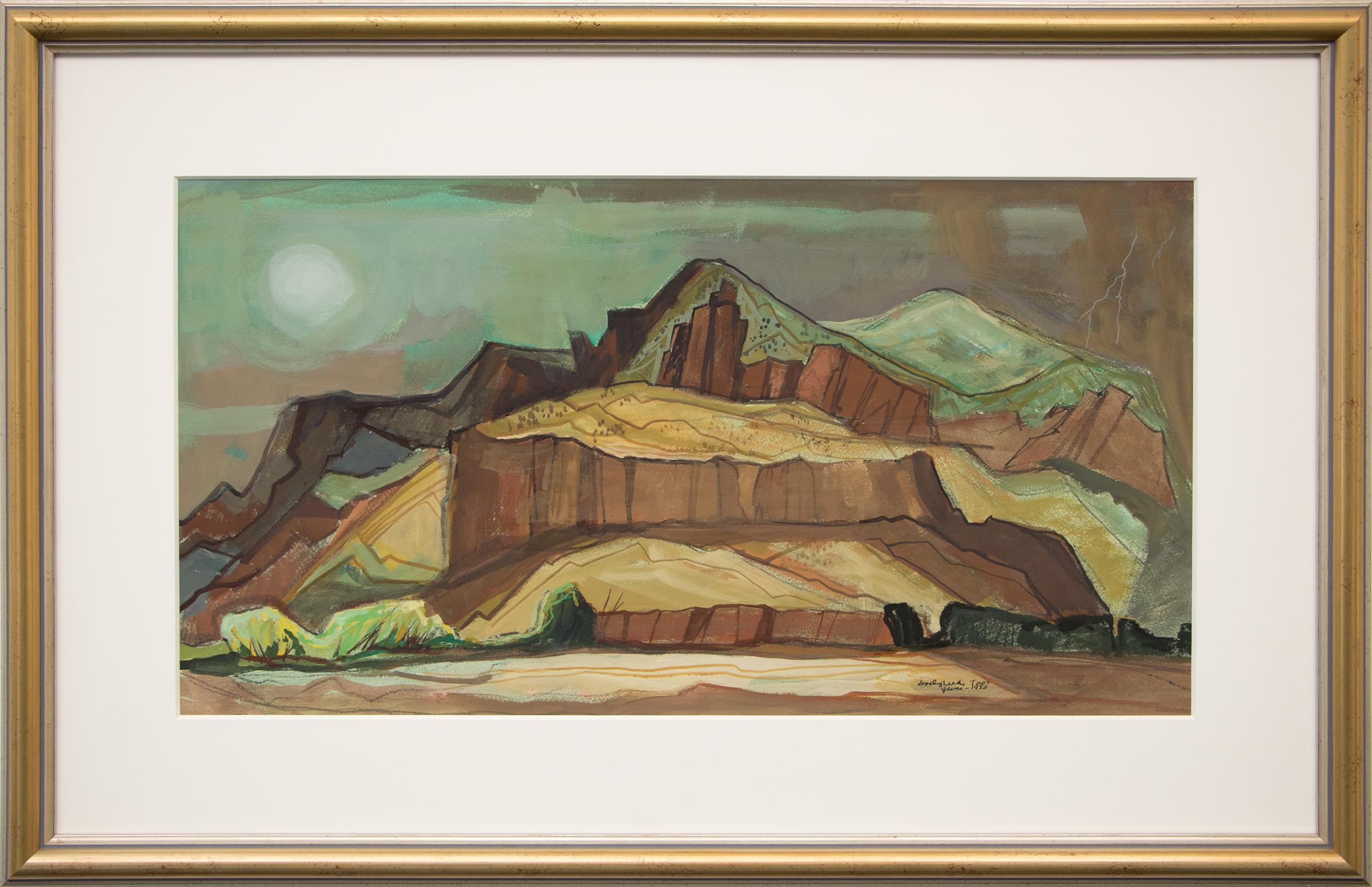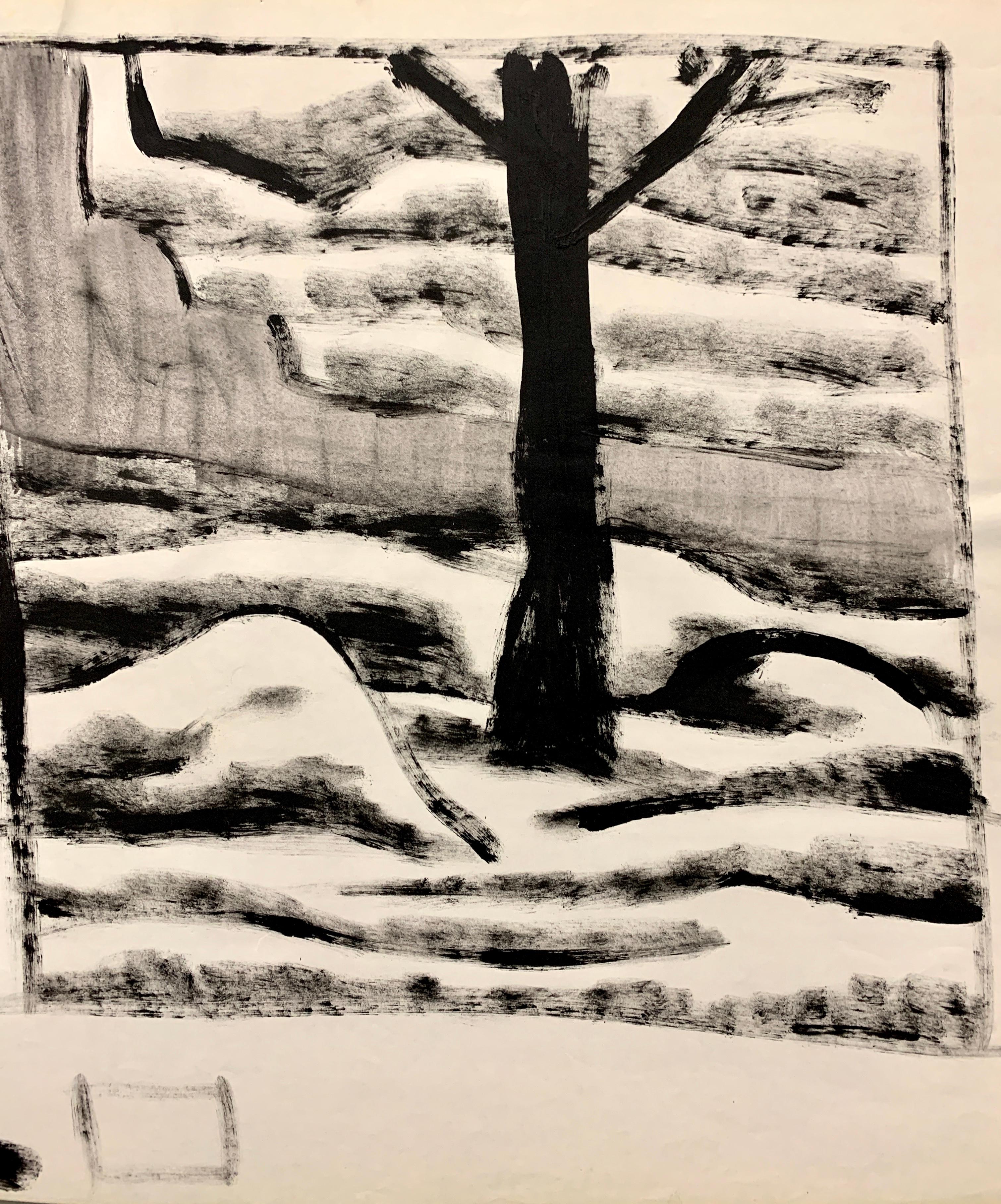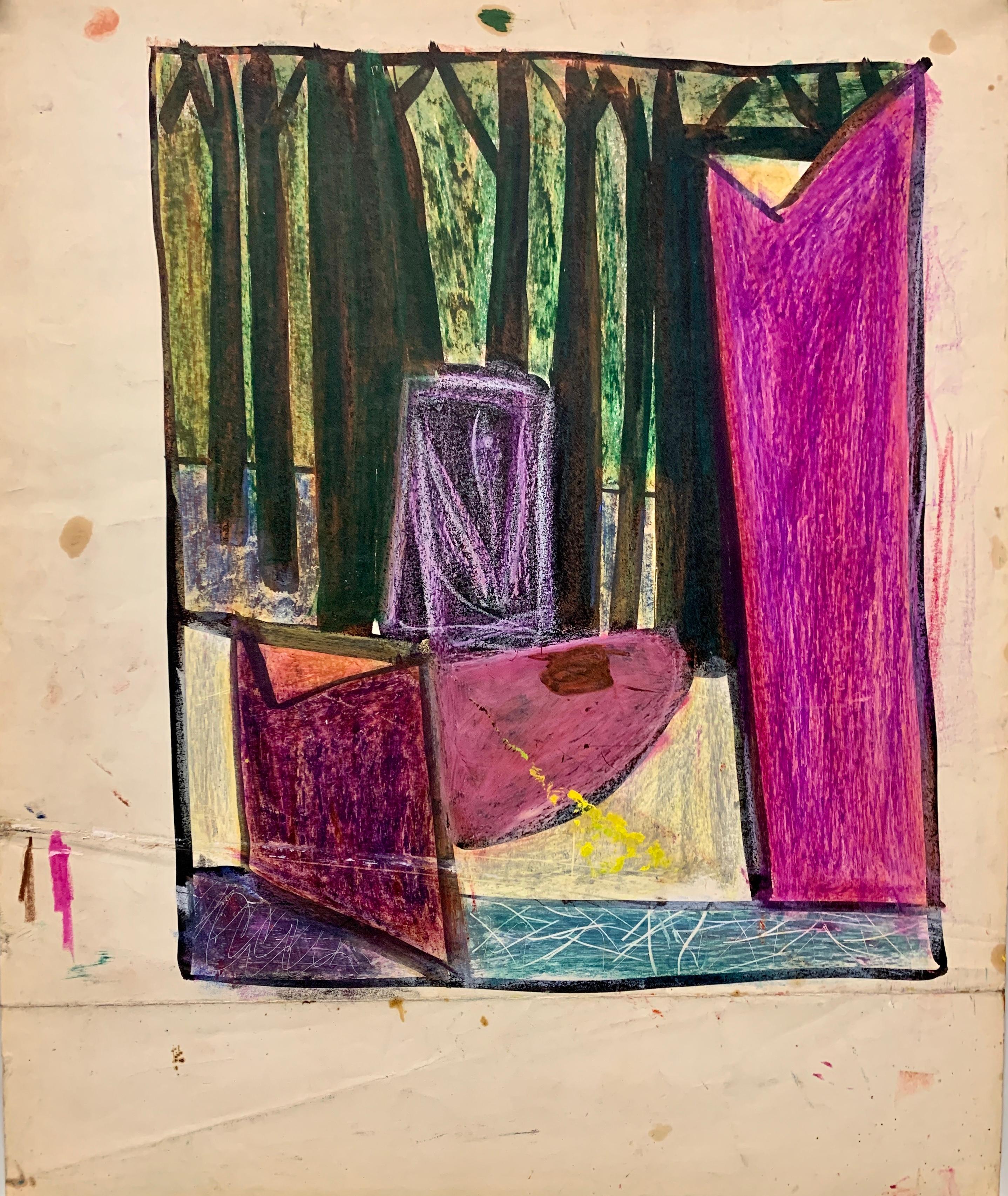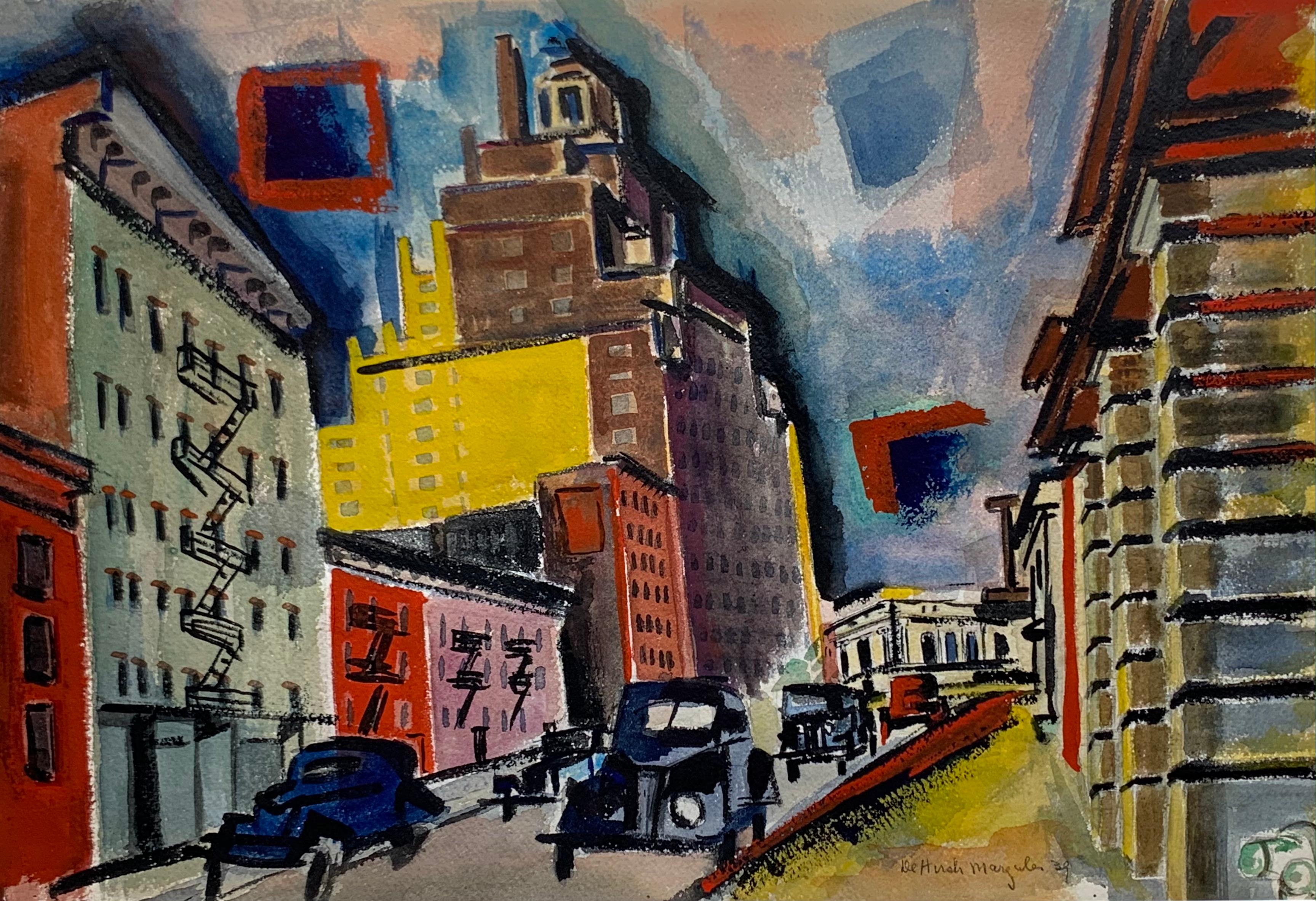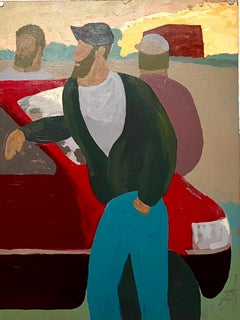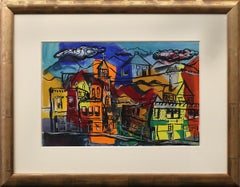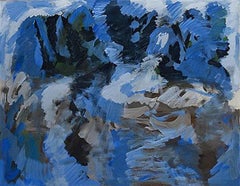
Penobscot Bay
View Similar Items
1 of 4
William Austin KienbuschPenobscot Bay1963
1963
About the Item
- Creator:William Austin Kienbusch (1914-1980, American)
- Creation Year:1963
- Dimensions:Height: 32 in (81.28 cm)Width: 41 in (104.14 cm)
- Medium:
- Movement & Style:
- Period:
- Condition:
- Gallery Location:Boothbay Harbor, ME
- Reference Number:1stDibs: LU54532995621
You May Also Like
- Large Hudson River Figurative Modernist Landscape Oil Painting Edward AvedisianBy Edward AvedisianLocated in Surfside, FLEdward Avedisian ( 1936-2007 ) Gouache or oil on paper, 3 guys around a car, hand signed in paint lower left, Measures 30"x 22.5" Edward Avedisian (June 15, 1936, Lowell, Massachusetts – August 17, 2007, Philmont, New York) was an American abstract painter who came into prominence during the 1960s. His work was initially associated with Color field painting and in the late 1960s with Lyrical Abstraction and Abstract Expressionism. He studied art at the School of the Museum of Fine Arts, Boston. By the late 1950s he moved to New York City. Between 1958 and 1963 Avedisian had six solo shows in New York. In 1958 he initially showed at the Hansa Gallery, then he had three shows at the Tibor de Nagy Gallery and in 1962 and 1963 at the Robert Elkon Gallery. He continued to show at the Robert Elkon Gallery almost every year until 1975. During the 1960s his work was broadly visible in the contemporary art world. He joined the dynamic art scene in Greenwich Village, frequenting the Cedar Tavern on Tenth Street, associating with the critic Clement Greenberg, and joining a new generation of abstract artists, such as Darby Bannard, Kenneth Noland, Jules Olitski, and Larry Poons. Avedisian was among the leading figures to emerge in the New York art world during the 1960s. An artist who mixed the hot colors of Pop Art with the cool, more analytical qualities of Color Field painting, he was instrumental in the exploration of new abstract methods to examine the primacy of optical experience. One of his paintings was appeared on the cover of Artforum, in 1969, his work was included in the 1965 Op Art The Responsive Eye exhibition at the Museum of Modern Art and in four annuals at the Whitney Museum of American Art. His paintings were widely sought after by collectors and acquired by major museums in New York and elsewhere. He has been exhibited in prominent galleries, such as the Anita Shapolsky Gallery and the Berry Campbell Gallery in New York City. Edward Avedisian was known for his brightly colored, boldly composed canvases that combined Minimalism's rigor, Pop art exuberance and the saturated tones of Color Field painting. Roberta Smith of the NYT writes of Avedesian: "Edward Avedisian helped establish the hotly colored, but emotionally cool, abstract painting that succeeded Abstract Expressionism in the early 1960s. This young luminary harnessed elements of minimalism, pop, and color field painting to create prominent works of epic proportions that energized the New York art scene of the time." In 1996 Avedisian showed his paintings from the 1960s at the Mitchell Algus Gallery, then in SoHo. His last show, dominated by recent landscapes, was in 2003 at the Algus gallery, now in Chelsea. Selected Exhibitions: Op Art: The Responsive Eye, at the Museum of Modern Art, Whitney Museum’s Young America 1965 Expo 67, held in Montreal, Canada. Six Painters (along with Darby Bannard, Dan Christensen, Ron Davis...Category
20th Century American Modern Landscape Paintings
MaterialsOil, Gouache, Archival Paper
- Central City, Colorado, 1950s Semi-Abstract Cityscape Gouache Painting, Red BlueLocated in Denver, CO'Central City, Colorado' by Leonard Silverstein is an original gouache on paper from 1954. Hand signed, titled, and dated by the artist in the lower right...Category
1950s American Modern Landscape Paintings
MaterialsGouache, Archival Paper
- Shanty TownBy Robert Noel BlairLocated in Buffalo, NYYou are viewing a modernist American acrylic painting depicting a charming but rundown seaside town at night. Robert Noel Blair (American, 1912-2003) was an American artist, paint...Category
1950s American Modern Landscape Paintings
MaterialsAcrylic, Archival Paper
- Secluded ValleyBy Ethel MagafanLocated in Lawrence, NYCasein on board. Ethel Magafan is known for her abstracted Western landscapes as well as, earlier in her career, the murals she created during the Great Depression for the Works Prog...Category
1950s Modern Landscape Paintings
MaterialsCasein
- Vintage Original Abstracted Landscape Silk Screen on Japanese Rice PaperLocated in Soquel, CAVintage Original Abstracted Landscape Silk Screen on Rice Paper Dramatic non-objective and abstracted landscape silkscreen in black india ink and neutral Casein paint tones. Unsigne...Category
1970s Abstract Expressionist Abstract Paintings
MaterialsInk, Casein, Rice Paper
- Spring Storm, Modernist Southwestern New Mexico Landscape Casein PaintingBy Doel ReedLocated in Denver, COSpring Storm, original vintage painting by New Mexico & Oklahoma modernist, Doel Reed (1894-1985). Evening scene with hint of a moon, clouds and rain over a rocky western landscape with low mountains/buttes, dated, June 1980 and signed by the artist lower right. Presented in a custom frame, outer dimensions measure 24 ½ x 37 ½ x 1 ¼ inches. Image size is 14 ¾ x 27 ¾ inches. Provenance: Private Collection, Denver, Colorado Expedited and international shipping is available - please contact us for a quote. About the Artist: Early in his artistic career, Doel Reed knew he wanted to be a printmaker. Influenced by Goya's aquatints, he extended himself beyond his formal art training to learn this technique, and he established himself as one of its masters. For decades, he devoted himself to the art program at the University of Oklahoma, taking it from a faculty of one to a major mid-Western department. Upon retirement, Reed focused totally on his work, moving with his family to Taos, New Mexico, where they had previously summered. Marked by strong tonal contrasts, his landscapes of this region are deeply emotional renderings with a sense of mystery -- modernist forms combined with romantic moodiness. Born and raised in Indiana, Reed originally studied architecture, which he credits with a lifelong attention to "how something is constructed." His mature style can be characterized as architectonic in his concern with assembling volumes and planes. Even the intense northern New Mexico light becomes the means to articulate three-dimensional patterns into cubistic interplay. When painting, Reed used thick strokes of oil and casein as another structural element. Transferring to fine art, his studies at the Cincinnati Art Academy were then interrupted by military service in World War I. Suffering a gas attack in the trenches of France, Reed spent months in a hospital temporarily blinded. The effects of the gas also damaged his lungs, which later prompted him to live in the dry climates of Oklahoma and New Mexico. After the war, he returned to his studies, but it was discovery of Goya's aquatints rather than his art classes that inspired. Considered the master, Goya drew on the tonal range available with this medium to create powerfully haunting imagery. Perhaps Reed responded personally to the eloquent series "The Disasters of War." Now his course was set, and he built his own etching press, which he continued to use for the rest of his life. In 1924, he accepted a teaching position at Oklahoma State University, where he remained for thirty-five years. Emphasizing drawing, Reed encouraged students to go to nature and translate the scene through their own sensibilities. Beginning as the sole art professor, he developed the program when it became an independent department in 1930. Through his stewardship, the university gained a reputation as one of the best for printmaking in the country. During the forties, Reed also prepared a series of lectures and demonstrations on aquatint for the Association of American Colleges. His most public offering in art education is the book "Doel Reed Makes An Aquatint" (1965). Sabbaticals allowed him to visit Paris in 1926 and 1930-31. Summer travel took him to Nova Scotia and Mexico, but gas rationing during World War II necessitated a closer destination. Thus the Reed connection with Taos was established. Finally in 1959, he, his wife, and daughter moved there to Talpa Ridge, the same outlying area in which artists like Andrew Dasburg, Howard Cook, and Barbara Latham resided. Settling into a complex of three adobe buildings, Reed was welcomed by these artists, who referred to their community as Neurosis Ridge. Rena Rosenquist of Mission Gallery remembers that Reed was "the most affable man" who liked cold martinis. For Reed, the surrounding Sangre de Cristo Mountains offered "end of abstract pattern." His inventive mind came up with techniques to transform a natural scene into a richly dimensional object. He fashioned a rosin box and concocted his own formula of etching ground to achieve a velvety texture with his prints. Described as "not for the faint-hearted,”" casein became a medium with which built up paint surfaces that almost seem sculpted. Both the prints and drawings are characterized by a tension between the two-dimensional surface pattern and the articulated space it conveys. In addition to landscapes, Reed produced a number of works of voluptuous women with the figures echoing landscape elements. As a boy, his first art experience was a grade-school field trip to the John Herron Art Museum (now the Indianapolis Art Museum), where he expressed his admiration for a painting of a nude mermaid -- an image that made a lasting impression. Reed was proudest of his recognition by the National Academy of Design (now just the National Academy). In 1942, he was named associate member; in 1952, he was named full academician. ©David Cook Galleries, LLC Exhibited: Society of Independent Artists, 1927 & 1929; Society of American Etchers, 1930-1946; Kansas City Art Institute, 1932; “100 Etchings of Year,” 1932-44; Art Institute of Chicago, 1934, 1937, 1939; National Academy of Design, 1934-46, 1965 (Samuel Morse Medal); Tulsa Art Association, 1935 (prize); Paris Salon, 1937; Rome, Italy, 1937; Sweden, 1938; Chicago Society of Etchers, 1938 (prize); Corcoran Gallery of Art, Washington, D.C., 1940; Philadelphia Print Club, 1940 (prize); Venice, Italy, 1940; Carnegie Institute, 1941; Currier Gallery of Art, Manchester, NH,1942, (prize); Metropolitan Museum of Art, 1942; Whitney Museum of American Art, 1942; Northwest Printmakers, 1942 (prize), 1944 (prize); Herron Art Institute, 1943; Library of Congress, 1944-46; Pennsylvania Academy of the Fine Arts, 1944-45; Philbrook Art Club, 1944 (prize); Laguna Beach Art Association, 1944 (prize); Southern States Art League, 1944 (prize); “50 American Prints,” 1944; Oakland Art Gallery, 1945 (prize); Audubon Artists, 1945, 1951 (Gold Medal of Honor), 1954 (John Taylor Arms Memorial Medal); Albany Institute of History and Art, 1945; Pasadena Art Institute, 1946; London; Allied Art Association; National Society of Painters Casein; Mission Gallery, Taos, NM, and Blair Galleries, Ltd. Santa Fe, NM. Works Held: Carnegie Institute; Honolulu Academy of Art; Grinnell College; Library of Congress; Metropolitan Museum of Art; Museum of Fine Art, Houston; New York Public Library; Oklahoma Art Club; Pennsylvania Academy of Fine Art; Philadelphia Museum of Art; Philbrook Art Club; Seattle Art Museum; Southern Methodist University; University of Montana; University of Tulsa; Bibliotéque Nationale, Paris; Victoria and Albert Museum, London. Further Reading: Harmsen's Western Americana: A Collection of One-Hundred Western Paintings with Biographical Profiles of the Artists, Dorothy Harmsen, Northland Press, Flagstaff, Arizona, 1971.; The Illustrated Biographical Encyclopedia of Artists of the American West, Peggy and Harold Samuels, Doubleday & Company, Inc., Garden City, New York, 1976.; Taos Artists...Category
1980s American Modern Landscape Paintings
MaterialsCasein, Archival Paper
$9,600 Sale Price33% Off
